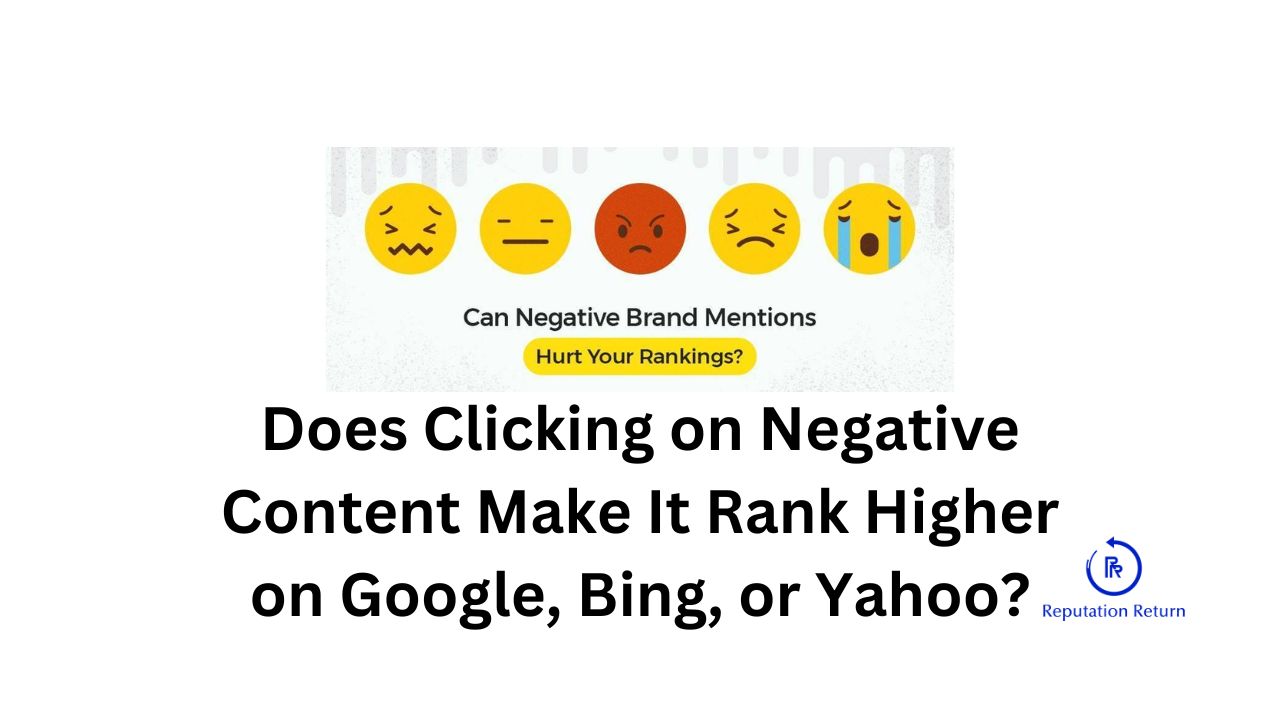Yes, clicking on negative content can indeed make it rank higher in search engine results. Google, for instance, uses over 200 factors to determine how content ranks, and there’s strong evidence that click-through rate (CTR) is one of the more significant factors. When users frequently click on a negative link, it signals to search engines that the content is relevant and engaging, potentially boosting its rank.
The Role of Click-Through Rate in Ranking
Click-through rate is the percentage of users who click on a specific link out of the total users who view a search engine results page. A high CTR indicates that a particular result is compelling and relevant to users’ queries, which can influence search engine algorithms to rank it higher. For example:
- Google’s Ranking Factors: Google considers CTR as a key indicator of a webpage’s relevance and usefulness. If a negative article about you or your business gets a lot of clicks, Google may rank it higher, believing it provides valuable information to users.
- Bing and Yahoo: Similarly, Bing and Yahoo also factor in CTR. Frequent clicks on negative content can push it up the search rankings on these platforms as well.
Impact of Negative Content
Negative content appearing at the top of search results can have severe consequences. It can affect personal reputation, business prospects, and even professional relationships. For instance:
- Personal Reputation: A person with a negative news article or a defamatory blog post appearing high in search results may find it challenging to secure employment or social acceptance.
- Business Impact: Negative reviews or articles about a business can deter potential customers, reduce sales, and harm the company’s brand image. A local restaurant with negative reviews prominently displayed in search results may see a drop in customer visits.
The Importance of Suppression Campaigns
To combat the negative impact of unwanted content, initiating a suppression campaign is crucial. Suppression involves pushing down negative links in search results by promoting positive, high-quality content. Here’s how it works:
- Create Positive Content: Develop and publish engaging, relevant content that highlights your positive attributes. This can include blog posts, press releases, customer testimonials, and social media updates.
- Optimize Existing Content: Enhance your existing positive content for search engines. Use relevant keywords, meta tags, and high-quality backlinks to improve its visibility.
- Consistent Effort: Continuously update and add new positive content to keep it fresh and engaging. Search engines favor active and regularly updated content.
Real-World Examples
- A Business Owner: A local business owner found that negative reviews on Yelp were affecting their customer base. By encouraging satisfied customers to leave positive reviews and creating blog posts about their excellent service, they managed to push down the negative content and restore their reputation.
- A Public Figure: A public figure faced negative press due to a past controversy. By engaging in community service and promoting these activities through blogs and social media, they were able to highlight their positive contributions and reduce the visibility of negative articles.
Start Suppression Now
The sooner you begin a suppression campaign, the faster you can counteract negative content. Proactive efforts can prevent unwanted negative content from ranking higher in your local market. By getting ahead of negative press with strong, quality content that promotes your positive attributes, you can effectively manage and protect your online reputation.
In summary, while clicking on negative content can make it rank higher, implementing a comprehensive suppression strategy can help mitigate its impact and promote a more positive online presence.

